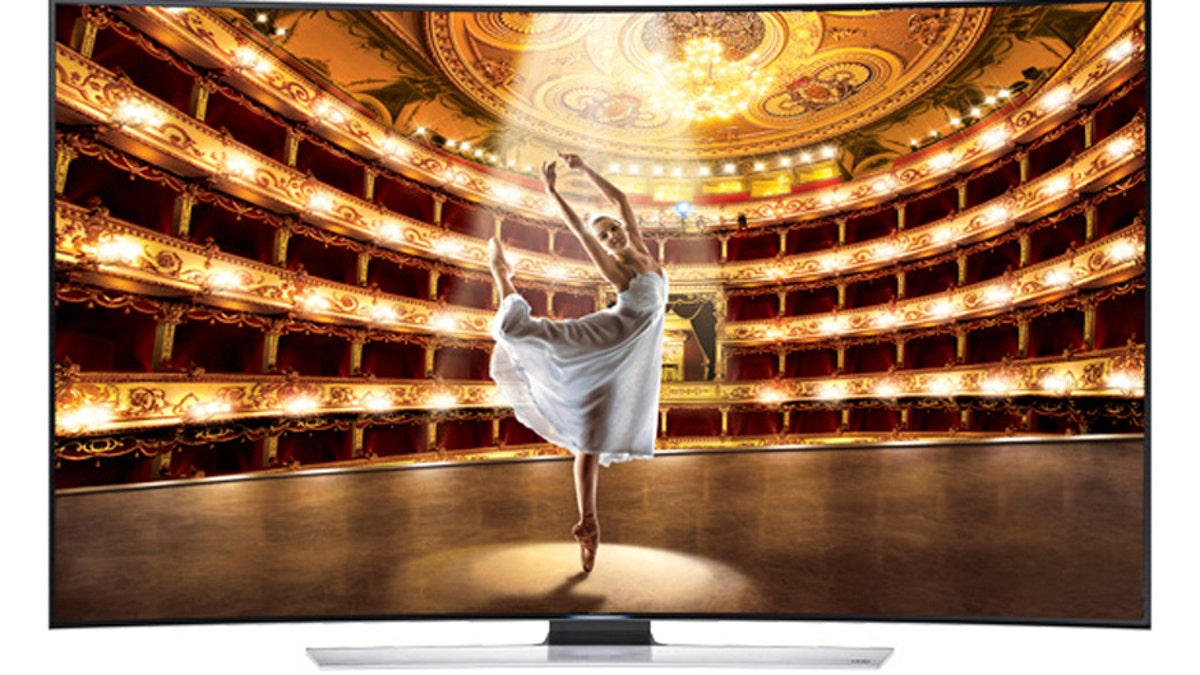
(Samsung)
How good is your eyesight? Your answer may determine whether the new 4K TVs, also known as Ultra HD TVs, are the next step beyond high definition TVs – or just another fad, like 3D TVs.
Television manufacturers from LG to Samsung to Sony are introducing waves of Ultra HD sets this spring. But whether anyone will buy them remains to be seen.
The idea of 4K is to cram more picture elements into the screen, delivering more detail and allowing viewers to sit closer without noticing all those little pixels. Technically, 4K displays have four times the pixel count of HD TVs (3840 x 2160 pixels vs. 1920 x 1080 pixels).
The concept makes sense. "But 4K is not like real life," Paul Gray, director of European research at Display Search, said last week at the IFA Global Press Conference. IFA holds its annual European consumer electronics show in Berlin.
In focus groups, Gray said, many didn't see the improvement in 4D because of its low frame rate (the number of pictures per second that create the illusion of motion).
A truly lifelike picture requires higher frame rates, he said. Ultra HD currently goes up to only 60 frames per second, and viewers said they preferred a lower resolution picture with a higher 120-frame rate. Several other factors, including color depth and dynamic range, make a significant difference in picture quality, but frame rate seems to be the critical factor.
So while 4K sets flood showrooms this year, consumers – still wary of upgrading after the failure of 3D to catch on – may not see enough improvement to warrant buying a new set.
To the trained eye, there is a difference, and I’m impressed. 4K creates city scenes rife with detail. It makes the tiles on the roof of an Italian villa jump off the screen. But it's like the difference between DVD and Blu-ray: Most eyes just don’t see it.
Another potential roadblock is the lack of 4K programming. There are some YouTube videos, and Netflix will be streaming some shows in the new format. But broadcasters are balking. Some have hinted that they may wait until an even higher resolution standard with a higher frame rate is adopted.
Ultra HD sets can improve the picture on standard HD programs, but the improvement varies from set to set. The more expensive, top-of-the-line sets throw a lot of video processing at the task and do an excellent job of making the picture better. But on lower-priced sets, the difference is hardly noticeable.
There's also the problem of cost. Ultra HD sets tend to command an ultra price. Even the least expensive models start at $1,000 for a 50-inch set, while a 55-inch model from a popular brand like Samsung is roughly $2,500.
Prices could drop rapidly, of course, and 4K could quickly become a standard feature as manufacturers struggle to create the next big picture. Or the technology could confront the same skepticism that curved TVs are facing.
All products have a life cycle, Gray said. One has to wonder how short Ultra TV’s will be.
